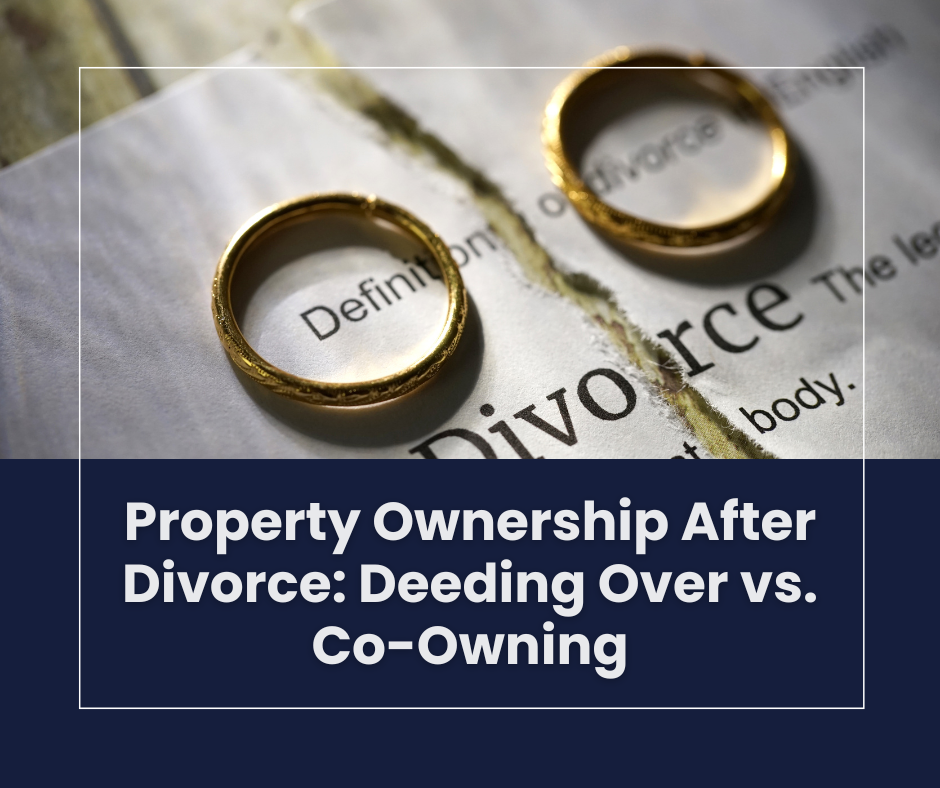
In the previous articles, I discussed Real Estate Challenges During a Divorce and some nuances and legal situations of Splitting Property After Divorce. Whether you choose to transfer ownership to one spouse or continue co-owning, understanding the process can help make the transition smoother. Here’s what you need to know about deeding a property over after divorce and how to successfully co-own if you decide to keep the property together.
If one spouse wants to keep the property while the other gives up their share, transferring ownership through a deed is the most common solution. Here’s how to do it:
Both parties must agree on who will take full ownership of the property. This is often part of the broader divorce negotiations and is typically documented in the divorce decree or marital settlement agreement. During this stage, it’s important to consider:
Having these terms laid out clearly from the start can help avoid confusion or conflict later in the process.
There are different types of deeds to transfer ownership:
A real estate attorney can help determine the best option for your situation.
Even if the deed transfers ownership, the mortgage remains the responsibility of both parties unless it is refinanced. This means the spouse who no longer owns the home could still be financially liable if payments are missed. Options include:
It’s important to speak with the mortgage lender and possibly a financial advisor to determine the best route.
Once the deed is signed and notarized, it must be recorded with the county clerk’s or recorder’s office in the county where the property is located. This process officially updates public records to reflect the new ownership. Here’s what to keep in mind:
Proper recording protects the new owner’s rights and ensures there are no legal questions about property ownership later on.
Some divorced couples choose to co-own a property, whether for financial reasons or to provide stability for children. If you decide to co-own, consider the following:
Having a legally binding co-ownership agreement can prevent future disputes.
These rules should be documented in a formal co-ownership agreement to minimize misunderstandings and clearly define each party’s responsibilities.
At some point, one or both parties may want to sell their share. Common exit strategies include:
Having these terms outlined in a legal agreement ahead of time can prevent unnecessary stress and conflict later. Having a buyout plan or agreement on how to sell the property ensures a smooth transition when the time comes.
Co-owning after divorce can have tax and credit implications. For example, both parties may still be responsible for the mortgage, which can impact credit scores if payments are missed. There may also be capital gains tax considerations if the property is sold later, especially if one spouse no longer lives in the home. Additionally, disagreements over maintenance costs or sale timing can lead to legal disputes. It’s best to consult a financial advisor and real estate attorney to ensure both parties are protected.
There’s no one-size-fits-all answer to handling real estate after a divorce. Deeding the property over offers a clean break, while co-ownership can work under the right conditions. No matter what route you take, having a solid legal agreement in place will help protect your financial future.
Visit Us
Cogswell Ave, Pell City, AL, 35128